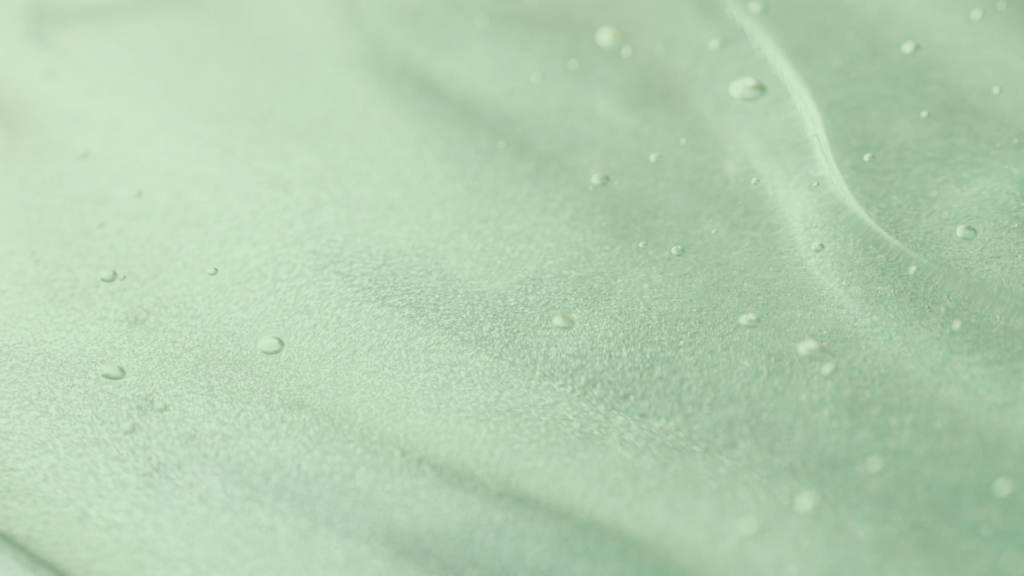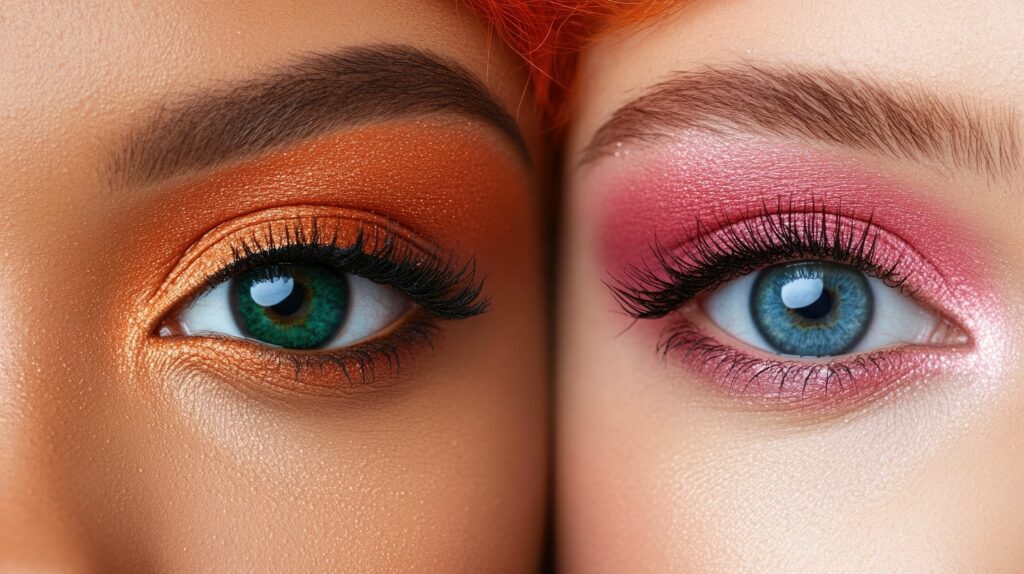The Hidden Role of Polymers in Cosmetics
Polymers are the unspoken workhorses of cosmetics and personal care. These synthetic ingredients thicken lotions, form durable films in long-wear makeup, and help disperse pigments evenly. For years, formulators have leaned on petro-derived polymers like carbomers, PVP, and acrylate copolymers to achieve the right viscosity, waterproofing, or hold.
This reliance has been largely successful from a performance standpoint – if it ain’t broke, why fix it? – until recently. Now, an increasing chorus of consumers and regulators are urging the industry to fix it, citing the environmental persistence of these materials and demanding more eco-conscious alternatives. The challenge for chemists and brand decision-makers is clear: deliver high performance without leaving an everlasting environmental footprint.
Environmental Persistence of Traditional Polymers
Many conventional cosmetic polymers are essentially plastics. Whether as microbeads once used in face scrubs or as the acrylate film-formers in mascara, these materials do not readily biodegrade. Instead, they accumulate in our ecosystems. Tiny polymer particles from personal care products have been found in rivers, oceans, and even within marine animals and humans. According to the European Chemicals Agency (ECHA), an estimated 10,000 to 60,000 tonnes of microplastics from products enter the environment each year, where they accumulate and persist for thousands of years, posing threats to countless organisms. In other words, the gel in your hair gel or the film from your lipstick could outlast you by millennia if it washes down the drain.
Microplastics pollution isn’t limited to exfoliating beads. In fact, synthetic polymers serve many functions in cosmetics – from adding texture and viscosity to encapsulating fragrances. They appear as everything from sparkly glitter to invisible thickeners. And once these microscopic plastics rinse off or are disposed of, they become part of an ever-growing environmental burden. Researchers have conclusively linked such persistent polymers to harmful effects on wildlife and water quality. The takeaway for formulators and brands is stark: using non-biodegradable polymers means contributing (often invisibly) to long-term pollution.
Microplastics and Evolving Regulations
Regulators worldwide are responding to this environmental concern. The European Union in particular has moved aggressively to curb intentionally added microplastics in products. In late 2023, the EU adopted Regulation (EU) 2023/2055 under REACH, which restricts the use of synthetic polymer microparticles in cosmetics and other products. This regulation defines “microplastic” in broad terms (solid synthetic polymer particles under 5 mm that are insoluble and non-biodegradable) and essentially aims to eliminate them from products over the coming years. Immediately, obvious offenders like microbeads in rinsed-off scrubs and masks are banned. Other applications are given a bit more time to reformulate – for example, microplastic ingredients in rinse-off cosmetics must be removed by 2027, and in leave-on lip and make-up products by 2035. These transitional periods (ranging roughly 4–12 years) are meant to allow development of suitable alternatives. But make no mistake: the clock is ticking for brands to find replacements for polymeric ingredients that don’t meet the new criteria.
Other countries are following suit. Microbeads used for exfoliation have already been banned in the U.S. and several other regions in the past decade. Now the regulatory focus is widening to include microplastic glitters, fillers, and even certain synthetic film-formers. Regulators and consumers are essentially asking the industry to innovate or eliminate – to come up with ingredients that can do the same jobs without lasting forever in the environment. This push for sustainable formulation isn’t just bureaucratic hassle; it’s driving real innovation in material science. Recently, for instance, chemical engineers developed biodegradable polymer beads (from natural polyesters) to replace traditional plastic microspheres, which could eliminate thousands of tonnes of microplastics if adopted widely. The writing on the wall is clear: future cosmetic formulas must be microplastic-free and environmentally benign. Brands that proactively reformulate now will not only stay ahead of regulations but also earn trust from eco-conscious consumers.
Sensory and Performance Trade-offs
Apart from environmental issues, formulators know that synthetic polymers can have sensory drawbacks. Anyone who has applied a hair gel that dried into a stiff film or a sunscreen that felt plasticky on the skin has experienced this. Many traditional film-forming agents (think acrylate copolymers or certain silicone resins) can leave an occlusive, sometimes tacky layer. This is great for long-wear performance and water resistance – but not so great for consumer comfort. In color cosmetics, a polymer that keeps your foundation transfer-proof through the day might also be what makes it feel heavy or dry after application.
Formulators have historically added oils, silicones, or plasticizers to offset these tactile issues, trying to strike a balance between durability and feel. However, solving one problem by adding more ingredients can introduce new complications (instability, greasiness, cost, etc.). Natural biopolymers like plant gums or starches have been explored as alternatives, but they sometimes bring their own challenges – for example, xanthan gum can be stringy or sticky, and alginate thickeners can break down in low pH. The result is that going “green” has often meant compromising either performance or elegance of the product experience. What the industry needs are multifunctional polymers that check all the boxes: sustainable and biodegradable, regulator-friendly, while also delivering a sublime sensory profile and strong technical performance.
A New Generation of Natural Polymers: CosmoSurf® DDG-20 and DDG-28
Innovators like SurfaTech Corporation have stepped up to the challenge, creating advanced naturally derived polymers that aim to replace traditional synthetics without missing a beat. Two standout examples are CosmoSurf® DDG-20 and CosmoSurf® DDG-28 – proprietary polymeric esters designed as multifunctional dispersants and film-formers. Unlike typical “plasticky” polymers, these ingredients are derived from renewable resources (such as coconut oil, glucose, and plant fatty acids) and engineered to be biodegradable and microplastic-free by design. They represent a convergence of green chemistry and high performance, offering formulators a way to meet tightening regulations and consumer expectations without sacrificing product quality.
CosmoSurf® DDG-20: Breathable Film, Durable Protection
CosmoSurf® DDG-20 is a naturally derived breathable film-forming polymer and pigment dispersant that can replace conventional acrylate polymers in applications like suncare and long-wear makeup. Chemically, it’s a complex ester (INCI: Bis-Octyldodecyl Dimer Dilinoleate/Propanediol Copolymer) that forms a hydrophobic yet flexible film on the skin. In practice, this means products can achieve excellent water resistance and wear duration while still feeling light and comfortable. SurfaTech reports that DDG-20 creates a unique film that is permeable to water vapor (“breathable”), so skin doesn’t feel smothered.
Importantly, CosmoSurf® DDG-20 excels at pigment dispersion. It uses a branched ester structure to wet out and uniformly disperse particles like iron oxides or zinc oxide, preventing clumping and yielding stable, low-viscosity dispersions. Formulators of natural sunscreens and color cosmetics will appreciate that it can evenly suspend high loads of mineral pigment, which is critical for both SPF efficacy and coverage uniformity. In fact, DDG-20 has been shown to help hold sunscreen actives on skin through 80 minutes of water immersion, enabling very water-resistant SPF claims. All the while, it maintains an exceptional skin feel, described as silky and non-tacky, even in high-pigment or high-SPF formulas.
From a regulatory and environmental standpoint, DDG-20 checks all the boxes. It is inherently biodegradable – in one laboratory test, approximately 30% of a DDG-20 sample broke down in just 28 days. his indicates it will not persist indefinitely in the environment, a stark contrast to conventional acrylate polymers. SurfaTech explicitly markets it for “microplastic free formulations,” underscoring that replacing acrylate film-formers with DDG-20 can help brands align with microplastic bans. The ingredient contains no silicones or polyethylene glycols (PEGs), and is made from renewable feedstocks without heavy metal catalysts, further speaking to its green profile. In short, DDG-20 offers the performance of a long-wear synthetic polymer without the legacy of pollution or poor sensory. It’s an easy drop-in solution for formulators developing natural, high-performance sunscreens, foundations, or any product where a weightless water-resistant film is desired.
CosmoSurf® DDG-28: Pigment Dispersant and SPF Booster
CosmoSurf® DDG-28 is a sister polymer to DDG-20, engineered with a focus on enhancing pigment dispersion and boosting sunscreen performance. It carries the INCI name Bis-Dodecylhexyldecyl Dimer Dilinoleate/Propanediol Copolymer, and like DDG-20, it is a complex ester derived from coconut oil, sugars, and fatty acids. The molecular tweak gives DDG-28 a slightly different chain structure, optimized for use in color cosmetic formulations that have broad-spectrum (UV) requirements. For example, a tinted moisturizer or foundation with mineral UV filters can benefit greatly from DDG-28. It functions as a primary dispersant to evenly distribute zinc oxide or titanium dioxide particles, which maximizes the uniformity of coverage (and thus UV protection). The SurfaTech technical data indicates that incorporating DDG-28 can increase SPF performance compared to traditional dispersants, essentially by ensuring those UV-shielding particles are finely and consistently spread throughout the formula and across the skin.
CosmoSurf® DDG-28 also serves as a film-former that adds water resistance to formulations. It creates a substantive (but flexible) film on the skin that helps anchor pigments and actives in place, preventing wash-off or rub-off. This is particularly useful for modern hybrid products like makeup with SPF, where both longevity and protection are paramount. Despite forming a robust film, DDG-28 maintains a soft, silky skin feel. By reducing the surface tension of oils in the formula, it contributes to a smoother spread and elegant finish without greasiness. Consumers applying a DDG-28 fortified product are less likely to experience the dreaded heavy or sticky sensation that some sunscreen makeups impart. In formulator testing, DDG-28 has been praised for not compromising skin feel even at higher loading – a testament to its “no trade-off” design philosophy.
Like its counterpart, DDG-28 is readily biodegradable and aligns with global “green beauty” regulations. Brands can use it to replace petroleum-based dispersants (like polyisobutene or polyurethane powders) and still make claims around sustainability. And because DDG-28 is neither a solid plastic particle nor persistent in the environment, it can help companies future-proof their formulations against microplastic restrictions. SurfaTech’s corporate stance on these polymers highlights a commitment to microplastic-free, coral reef-safe ingredients developed via green chemistry. For regulatory professionals, this signals that using CosmoSurf® DDG-20 or DDG-28 can simplify compliance with tightening laws while also bolstering a brand’s environmental stewardship credentials.
Performance Meets Sustainability
In an industry at the nexus of science, beauty, and now environmental responsibility, innovations like CosmoSurf® DDG-20 and DDG-28 offer a much-needed path forward. They allow formulators to overcome the classic dilemma of choosing between performance and planet. By harnessing biodegradable, naturally sourced polymers that match (or even improve upon) the functionality of synthetic incumbents, brands can create products that delight consumers and satisfy regulators in equal measure. A sunscreen can be ultra-water-resistant and reef-safe. A long-wear foundation can be transfer-proof and microplastic-free. These once-orthogonal goals are now aligned, thanks to smart material design.
If your formulations are still leaning on synthetic polymers for performance, now’s the time to reevaluate. CosmoSurf® DDG-20 and DDG-28 offer a way forward—one that’s sustainable, regulation-ready, and designed with the end-user experience in mind. They represent more than an ingredient swap. They’re an opportunity to retool your formulas with smarter, cleaner materials that support environmental goals without asking your consumers to settle.
And for formulators, that’s the sweet spot—where science meets substance.
Want to see these polymers in action?
Reach out to your designated Deveraux Specialties sales representative to request samples of CosmoSurf® DDG-20 and CosmoSurf® DDG-28 or submit a request on our website.
CosmoSurf® DDG-28
RESOURCES
- European Commission – “Stricter rules on microplastics in products (Commission Regulation (EU) 2023/2055)” (press release, Sept. 27, 2023). URL: https://eur-lex.europa.eu/legal-content/EN/TXT/PDF/?uri=CELEX:32023R2055
- Critical Catalyst – “European Union restricts microplastics in cosmetic products” (Regulatory update, Sept. 2023). URL: https://criticalcatalyst.com/european-union-restricts-microplastics-in-cosmetic-products/#:~:text=Regulation%20,both%20of%20the%20following%20conditions
- ClientEarth – “EU’s move to ban microplastics under attack…” (Press release citing ECHA data, June 2019). URL: https://www.clientearth.org/latest/press-office/press-releases/eu-s-move-to-ban-microplastics-under-attack-from-chemicals-industry/#:~:text=According%20to%20ECHA%2C%20every%20year%2C,marine%20reptiles%2C%20birds%20and%20cetaceans
- Barmpalexis et al., Cosmetics (MDPI) 2024 – “Microplastics in Cosmetics: A Review of Presence and Sustainable Alternatives.”. URL: https://www.mdpi.com/2079-9284/11/5/145#:~:text=Since%20the%20emergence%20of%20microplastics%2C,in%20PCCPs%20necessitates%20considerable%20attention









